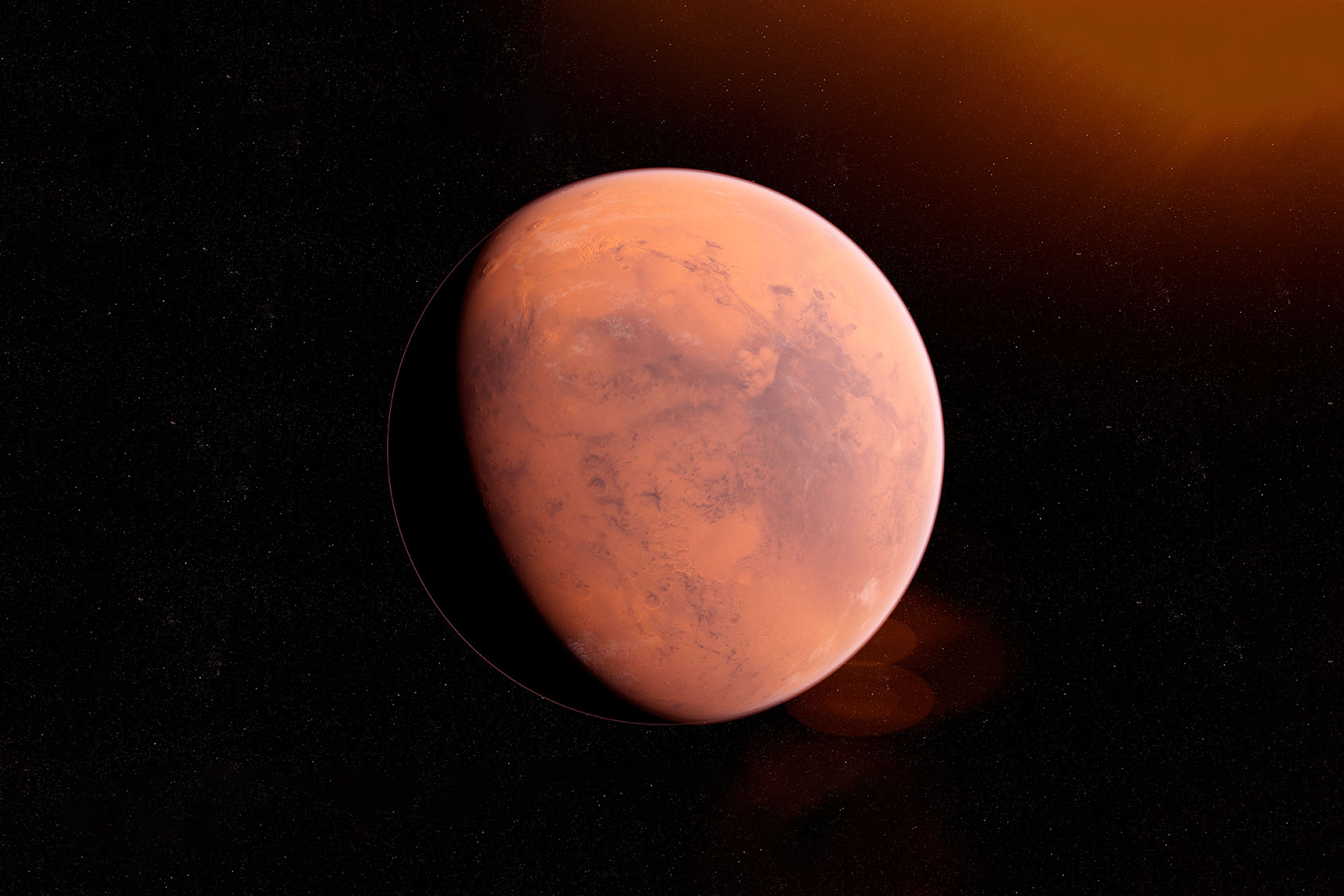From its signature red-colored soil to canyons, dead volcanoes and dry lake beds, the Martian landscape has intrigued humans for generations. Not only does it feature the largest mountain in our solar system and the deepest canyon, but evidence of past liquid water on the planet could indicate life once existed on this rocky world. What lies underneath Mars’ surface is equally fascinating — as Mars’ evolution by a planet is, like Earth, driven by the geologic behavior of what’s below. Hence, scientists have long wondered whether Mars has a core just like Earth’s, or something completely different.
The answer is getting much more clear thanks to new research that took advantage of seismic waves rippling through the Red Planet. The research, published in the Proceedings of the National Academy of Sciences on April 24, help confirm expert predictions of what Mars is like at its center. The result suggests Mars’ core is remarkably different from Earth. That could inform our ideas of what planets in other galaxies are like.
The data comes courtesy of the InSight mission, which stands for Interior Exploration using Seismic Investigations, Geodesy and Heat Transport. Launched five years ago, the mission dropped a seismometer, an instrument that can measure earthquakes and volcanic eruptions, onto Mars in late 2018. It somewhat resembles a hub cap that rests in the dirt.
While the mission technically ended last December, scientists are still interpreting the data from InSight — hence this new insight into the planet’s geology. The researchers analyzed readings from two different seismic events, marking the first direct observations ever made of another planet’s core. One temblor was caused by a marsquake — an earthquake on Mars, that is — while the other came from a large meteoroid impact. Both occurred on the opposite side of the planet from the InSight seismograph, which is useful for interpreting what exactly the energy waves were traveling through before it reached InSight.
“We needed both luck and skill to find, and then use, these quakes,” lead author Jessica Irving, an Earth scientist at the University of Bristol in the United Kingdom, said in a statement. “Farside quakes are intrinsically harder to detect because a great deal of energy is lost or diverted away as seismic waves travel through the planet.”
Want more health and science stories in your inbox? Subscribe to Salon’s weekly newsletter The Vulgar Scientist.
The results indicate Mars most likely has a completely liquid core. That would make it different from Earth, which has the combination of a liquid outer core and solid inner core. Additionally, based on how these seismic events rippled through the planet, it is possible to infer what this core is likely made of: carbon, sulfur, oxygen and hydrogen. But the bulk of it is liquid iron, which is similar to Earth’s core; however, on Mars, this isn’t enough for the planet to generate a strong magnetic field.
These geochemical analyses tell us a lot about how Mars formed and changed over time.
“You can think of it this way; the properties of a planet’s core can serve as a summary about how the planet formed and how it evolved dynamically over time. The end result of the formation and evolution processes can be either the generation or absence of life-sustaining conditions,” explained University of Maryland associate geology professor Nicholas Schmerr, another co-author of the paper. “The uniqueness of Earth’s core allows it to generate a magnetic field that protects us from solar winds, allowing us to keep water. Mars’ core does not generate this protective shield, and so the planet’s surface conditions are hostile to life.”
There is evidence that early Mars may have been a lot like Earth, with rivers and possibly even basic life. Planetary scientists believe that it turned into the barren world it is today for two reasons: first, that the planet periodically veered in its tilt compared to the sun, meaning that the seasons would be unpredictable or one side of the planet might never see light. And second, because of the decay of its strong magnetic field, which as Schmerr explained would mean the planet has less of a protective layer shielding it from solar winds.
Knowing the composition of the core also helps explains how the early solar system evolved, researchers say.
“Determining the amount of these elements in a planetary core is important for understanding the conditions in our solar system when planets were forming and how these conditions affected the planets that formed,” Doyeon Kim of ETH Zurich, one of the paper’s co-authors, added.
The lack of a magnetic field is one of many reasons that living on Mars would be extremely hostile for anything living, especially humans, if some of us were to ever migrate there. However, there is evidence in certain rocks that Mars once had a magnetic field, but it was lost over time. This increases the likelihood that life may have once existed on our neighboring planet, but if so, we still haven’t found direct evidence of this.
NASA has been trying to measure the seismic activity of Mars since the mid-’70s, with both the Viking 1 and Viking 2 landers. The first failed to work, and the second was muddied by conflicting data that may have been caused by the wind. Scientists have been waiting a long time to learn as much as we have about this planet’s interior, but it’s worth noting this is also just a model representing the best estimate of what’s really under the mantle on Mars. Deploying a multi-location network of seismometers (like we have on Earth) and other experimental data will be critical to fully unlocking the secrets of Mars’ inner workings.

